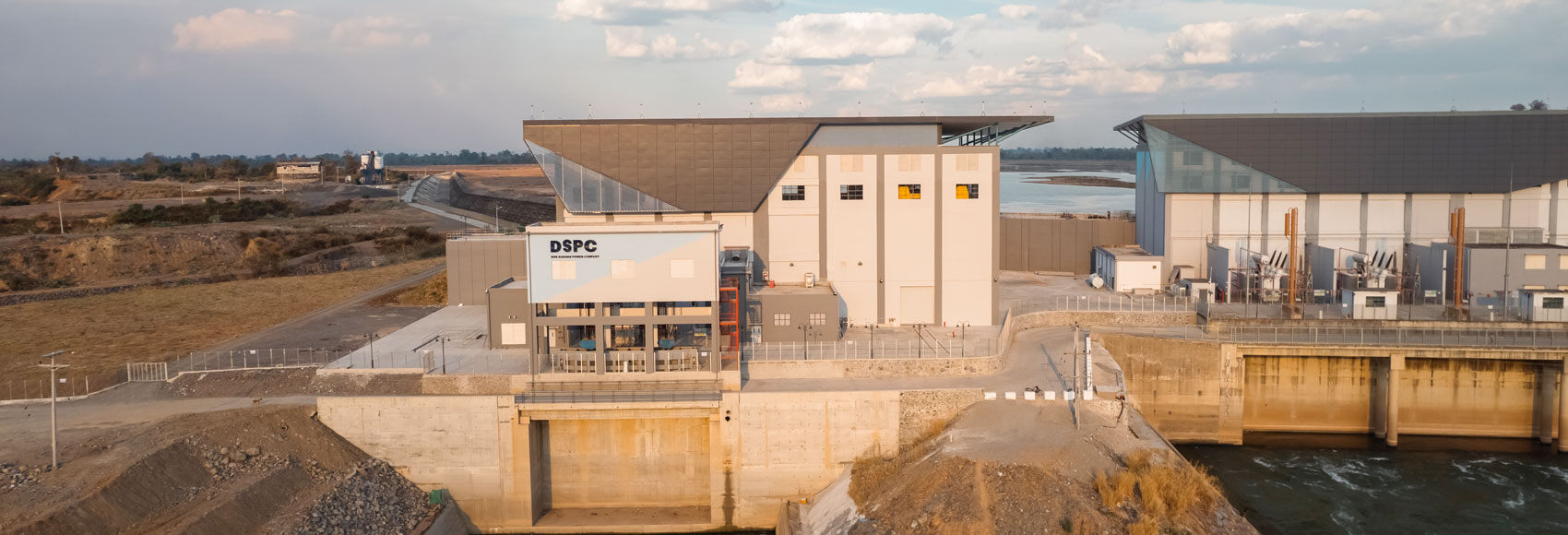
Renewable
Energy
The renewable energy sector in Southeast Asia is poised for significant growth, driven by rising energy demand, governmental commitments to decarbonisation, and the region’s abundant natural resources. As economies across the region continue to develop, the need for sustainable and reliable energy sources becomes increasingly urgent. In response, many Southeast Asian nations are implementing policies and incentives to accelerate the shift away from fossil fuels and toward cleaner energy alternatives.
Hydropower and solar energy, in particular, are expected to play crucial roles in meeting the region’s future energy needs.
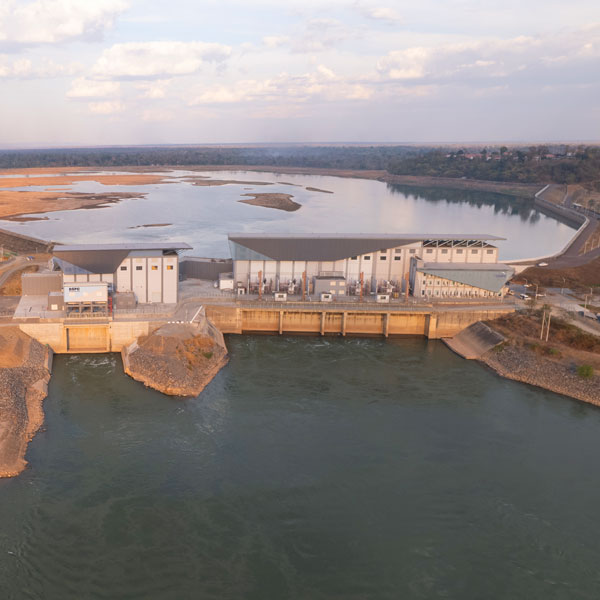
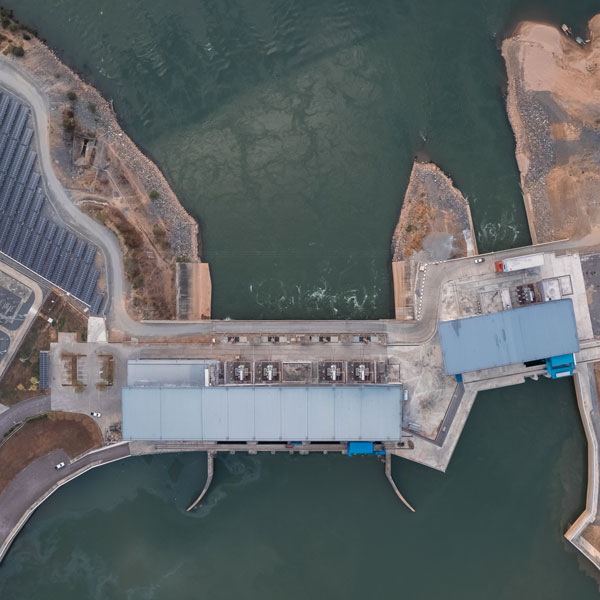
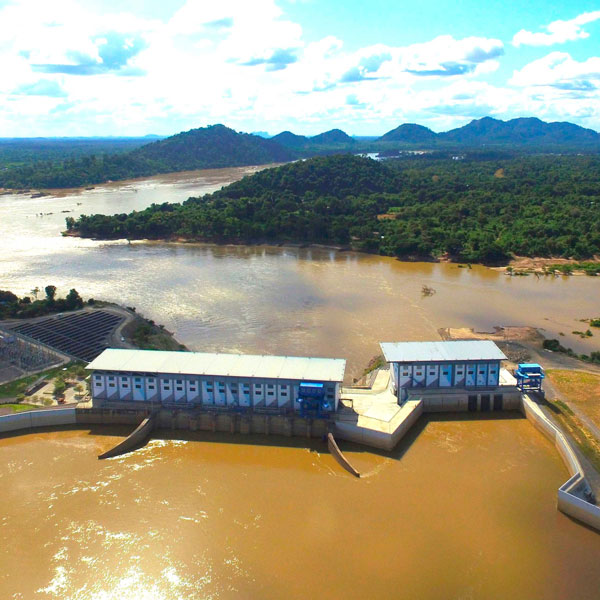
Hydropower
Mega First Corporation Berhad (“MFCB”) is the owner of Don Sahong Power Company Ltd (“DSPC”), the developer of the Don Sahong Hydropower Project (“DSHP” or the “Project”).
DSHP is located at the southern end of the Sahong Channel, one of seven major channels of the Mekong River in the Siphandone (Four Thousand Islands) area, which flows over the geological feature called the “Great Fault Line”.
The DSHP comprises run-of-river hydropower plants, embankments, a switchyard, and transmission lines. The hydropower plants consist of:
- Four 65MW turbines in a powerhouse, constructed from 2016 to 2019 on the Sahong Channel. They utilise a natural fall of about 20 metres over the 5 km reach of Sahong Channel to generate approximately 2,028 GWh of renewable energy annually.
- A fifth turbine, constructed and successfully commissioned on 4 July 2024. This expansion design does not involve any in-river excavation and was strategically constructed adjacent to the existing powerhouse, ensuring no disruption to the flow of any Mekong River channels.
With the addition of the fifth turbine, the DSHP now has a total installed capacity of 325MW and an expected annual energy output of approximately 2,300 GWh, which is exported to Cambodia via Electricité du Laos (“EDL”).
The ultimate goal of DSHP is not only to build an economically viable project but also to provide the infrastructure, opportunities, and assistance for local development. Accordingly, a strong focus has been placed on understanding the social and environmental impacts of the project. Implementation of the social and environmental management plans, based on a process of local consultation and coordination, will extend the opportunities of local people and provide the means to improve their livelihoods – a key criterion for the success of DSHP.
DSHP makes a significant contribution to the socio-economic development of the country.
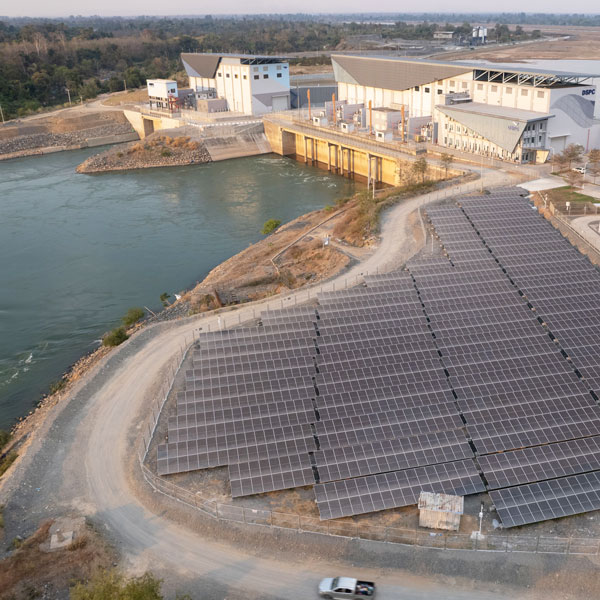
On 13 February 2008, MFCB signed a Project Development Agreement with the Government of the Lao People’s Democratic Republic (“Laos”) to develop, build, own, and operate the Don Sahong Hydropower Project.
On 15 September 2015, the project company (“DSPC”) entered into a Concession Agreement (“CA”) with the Government of Laos (“GOL”), whereby the GOL granted the concession rights to DSPC for the development of the Project on a build, operate, and transfer basis. The Project, a 260 MW run-of-river hydropower facility capable of generating approximately 2,028 GWh of electricity annually, was expected to commence commercial operation in early 2020. The concession period was set to end 25 years after the Commercial Operation Date (“COD”). Electricity generated by the Project would be sold to EDL under a Power Purchase Agreement (“PPA”).
At the expiration of the concession period, or upon early termination of the CA by either party, MFCB would transfer the project assets to the GOL in accordance with the terms and conditions of the CA. This includes compliance with Prudent Utility Practices, Lao law, and the provision of all necessary data and information to the GOL.
On 1 October 2015, DSPC entered into a PPA with EDL for the sale and purchase of all electricity generated by the Project on a take-or-pay basis. The PPA was established for a period of 25 years from the Project’s COD. DSPC would construct a 230kV transmission line from the Project’s switchyard to interconnect with the existing EDL grid system. Construction of the Project commenced in late 2015, with completion anticipated by the end of 2019.
The project commenced full commercial operation on 7 January 2020 after successful testing and synchronization with EDL’s new 500kV transmission line to Cambodia.
The Ministry of Energy and Mines of Laos issued a certificate confirming the COD of the Project on 1 October 2020. Consequently, the concession period was set to end on 30 September 2045. As per the CA dated 15 September 2015, DSPC is exempt from income tax until the fifth anniversary of the COD. DSPC initiated a modification project to add a fifth turbine. Construction began in December 2021, with completion targeted for the third quarter of 2024.
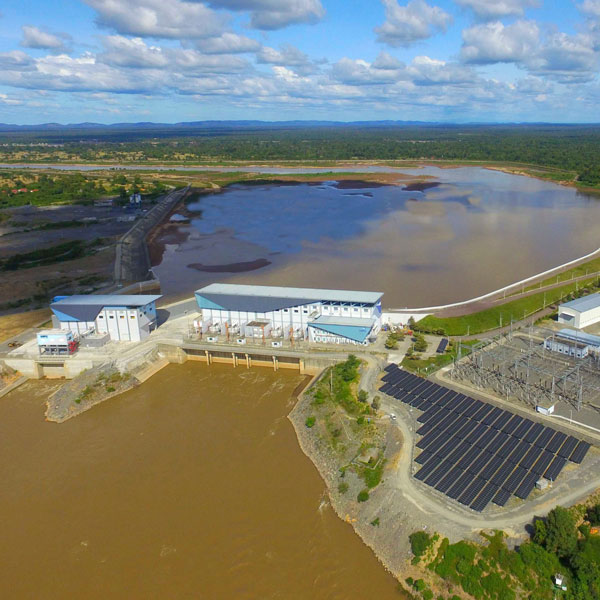
In December 2023, MFCB acquired an additional 20% equity stake in DSPC, increasing MFCB’s effective equity interest in the Project to 95%.
In 2024, DSPC entered into a Supplemental Concession Agreement (“SCA”) with the GOL and a Supplemental Power Purchase Agreement (“SPPA”) with EDL to revise certain commercial terms, following the addition of the fifth unit, which commenced operation on 4 July 2024.
The original four turbine-generator units, with a combined capacity of 260MW, achieved COD on 1 October 2020 and can generate approximately 2,028 GWh of energy annually. Following the addition of the fifth unit, the Project’s total capacity increased to 325MW, with an expected annual energy generation of approximately 2,300 GWh.
As outlined in the SCA:
- the new commercial operation date for the entire project, referred to as the Final Commercial Operation Date (“FCOD”), will be 1 January 2025. The revised concession period will be 25 years from the FCOD, ending on 31 December 2049.
- Income tax will be 5% in 2026, progressively rising to 24% in 2030.
- The SPPA term shall follow the concession period in the SCA, which is a period of 25 years from the FCOD on 1 January 2025.
- EDL shall purchase and pay for all energy availability on a take-or-pay basis in the months of November to May (Dry season) every year throughout the SPPA term. During the Wet season (June to October), EDL shall purchase and pay for energy availability of up to 955GWh on a take-or-pay basis every year throughout the SPPA term. Any energy availability above 955GWh, EDL shall purchase and pay for any energy that it dispatches.
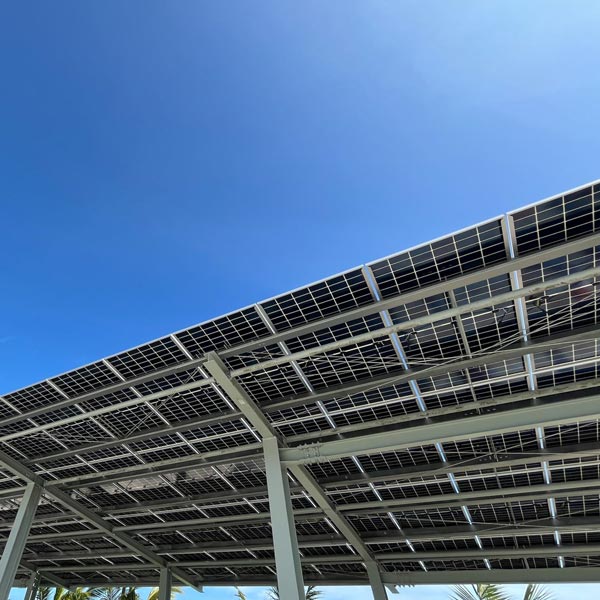
Solar Power
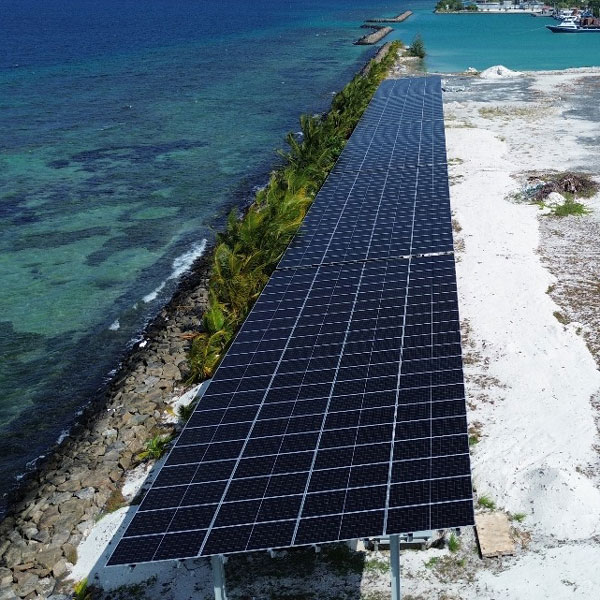
It is of note that the financing of C&I solar projects is particularly unique as it is under a Multi-tranche Green RM100 million Term Loan Facility that has been assigned a “Gold” assessment by the Malaysian Ratings Corporation Berhad (“MARC”), the highest assessment on MARC’s scale for green financing instruments. This is the first “Gold” green loan assessed by MARC in Malaysia and demonstrates our commitment to Sustainable Development Goals (“SDG”) 7, which is also in line with the Loan Market Association’s Green Loan Principles (GLP) 2020.
The Group expects to continue selectively adding new projects to the pipeline to expand its C&I solar PV investment portfolio, which forms part and parcel of the Group’s Renewable Energy (“RE”) strategy.
In August 2023, the Group secured a 46.5MW project quota under the Corporate Green Power Programme (“CGPP”) from the Energy Commission of Malaysia. This project is expected to contribute to the Division’s overall solar portfolio in 2025, marking the Group’s first large-scale solar development to implement the New Enhanced Dispatch Arrangement (“NEDA”) framework.
At present, our solar project portfolio extends beyond Malaysia, marking a significant step in our commitment to RE expansion. In addition to our presence in Malaysia, we have successfully expanded into Cambodia and the Maldives. The details of our overseas projects are as follows:
Maldives
Cluster project:
- Addu City
- Eydhafushi
- Fuvahmulah City
- Hinnavaru
- Thinadhoo City
- Kulhudhuffushi City
Cambodia
- Phnom Penh
Discontinued
Operations
As responsible corporate citizens, the Management of MFCB recognises that it is crucial to take steps to protect our planet from further degradation and preserve the earth’s resources for the future generations.
As far back as the mid-2000s, the Management took the first step toward transforming the Group’s highest income-generating power division by shifting away from non-clean energy to renewable energy. Having started the feasibility study of the Don Sahong Hydropower Project in 2006, the Group eventually signed the Power Purchase Agreement with Electricite Du Laos in 2015. When the agreements to operate the Shaoxing and Tawau plants were due for renewal in 2017, the Management made the bold decision not to seek extensions, as these two plants utilised pollutive, high-carbon-emission fuels that were not aligned with the Group’s long term aspirations.
Shaoxing Mega Heat & Power Co., Ltd (“SMHP”) was a 60%:40% sino-foreign co-operative joint venture formed on 15 October 1996 between Mega First Power Industries Sdn Bhd, a wholly-owned subsidiary of MFCB, and Qixian Heat & Power Co., Ltd of the People’s Republic of China. Under the joint venture agreement, SMHP had the right to operate the coal-fired heat and power plant located in Shaoxing City, Zhejiang Province, PRC, for a period of 22 years until 22 October 2017.
The power plant generated both heating and electric power. It had an installed capacity of 83MW with a steam supply capacity of 520 tonnes per hour. Steam was supplied to the neighbouring factories while electricity was transmitted and sold to the Power Bureau through the local grid. Steam sales contributed approximately 2/3 of sales while the remaining 1/3 came from energy sales.
The joint venture’s term was not extended by both parties upon expiration.
MFCB Group owns 51% of Serudong Power Sdn Bhd (“SPSB”).
SPSB builds, owns, and operates a 36MW diesel-fuelled power plant in Tawau, Sabah. SPSB was licensed to exclusively supply electricity to Sabah Electricity Sdn Bhd for a 21-year concession period starting from 2 December 1996.
SPSB’s power plant consists of 3 identical blocks of medium-speed generating sets, primarily fuelled by medium fuel oil procured from Petronas Dagangan Berhad, as part of a 21-year Fuel Supply Agreement. Wartsila NSD Corporation of Switzerland designed the power plant’s 4-stroke engines, while Hyundai Heavy Industries Co., Ltd and Hyundai Corporation Ltd were the licensed manufacturers.
Mega First Power Services Sdn Bhd, a wholly-owned subsidiary of MFCB Group, was responsible for the operation and maintenance of the power plant via an Operation and Maintenance Agreement for a period of 12 years starting from 2 December 1996, which was subsequently extended to 1 December 2017.
SPSB was subsequently divested on 30 May 2023.
